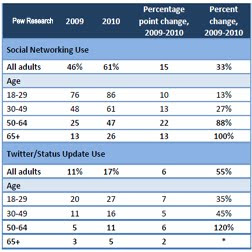
When a public relations firm has a client roster that claims Fender, Dickies, Red Bull, and MTV, you might expect a great pitch. Unfortunately, that is not always the case. The back of the house sounds different than the front. I've forgotten by how much.
If last week is any indication of things to come, there may be no shortage of silliness after sticking our toes back in the murky waters of publishing. Liquid [Hip] might be a side project, but it's quickly picking up steam and some people have taken notice.
Most pitches are professional. Penguin Books, for example, know what it is doing. From pitch to coverage, even their intern was professional. Likewise, we thought a mostly unknown musician did pretty well. She didn't have any public relations experience, but her pitch convinced us she had a story worth sharing. And then there was that firm with all those bright and shiny clients.
How PR Pitches Have Negative Impact.
The pitch was sent late at 6:10 p.m. on Friday, without any contact information other than a name and two links to their Web sites. What was especially unusual, is that it wasn't even a pitch as much as a time-sensitive promotional solicitation. Here it is, minus the closure.
Dear Rich/friends at LiquidHip,
I got your contact via the “inquiries” link given on your site, and was wondering if you’d be interested in doing a CD giveaway for the new Jenny Johnny album “I’m Havin’ Fun Now”? It comes out next Tuesday, and I was hoping we could have you set it up. If we could try shooting for next Tuesday (August 31st), that would be perfect, but obviously we can work around that date. Let me know if you’re interested. It’s a great album! It’s received a bunch of buzz thanks to the NPR stream posted up on Monday. Anyway, if you could get back to me ASAP that’d be great! Thanks so much!
Cheers,
[Name]
I happened to catch it as I was closing up late in the day. In retrospect, misspelling the name of the band, Jenny And Johnny, ought to have been a red flag. Referencing what NPR, another media outlet, did was also questionable. Ending with "Cheers" is always a bad sign in the U.S. But we bit.
After some discussion on whether or not we could accommodate the short notice (editorial juggling, establishing the giveaway criteria, getting an advance release, etc.), we decided it might be fun for our growing group. Besides, we had already covered a single from Jenny And Johnny and were bullish on the album. We responded within 30 minutes, with direct contact information for the weekend.
No call or follow up ever came. By Monday, we assumed the public relations firm had realized the Friday to Tuesday turn time was too close, even for them. By the end of the week, we thought otherwise. It was just a bad pitch, probably part of a mass email scheme to get publishers to read past the first line.
The downside for Jenny And Johnny was that we had intended to review the full album the following Friday (Sept. 3) until receiving the inquiry. We moved the review to Tuesday. But then, with no follow up from the firm, we covered what we originally planned and gave the Friday spot to the under covered My Gold Mask. We expect great things from them.
When you add it all up, it's a peculiar chain of events. Jenny And Johnny went from having an album review to a CD giveaway to nothing in less than one working day. Well, not nothing.
I can always use the experience to teach other public relations professionals and students what not to do. If you're going pitch, stick with it. Otherwise, your client will lose and your next pitch will end up in the don't bother pile.

































